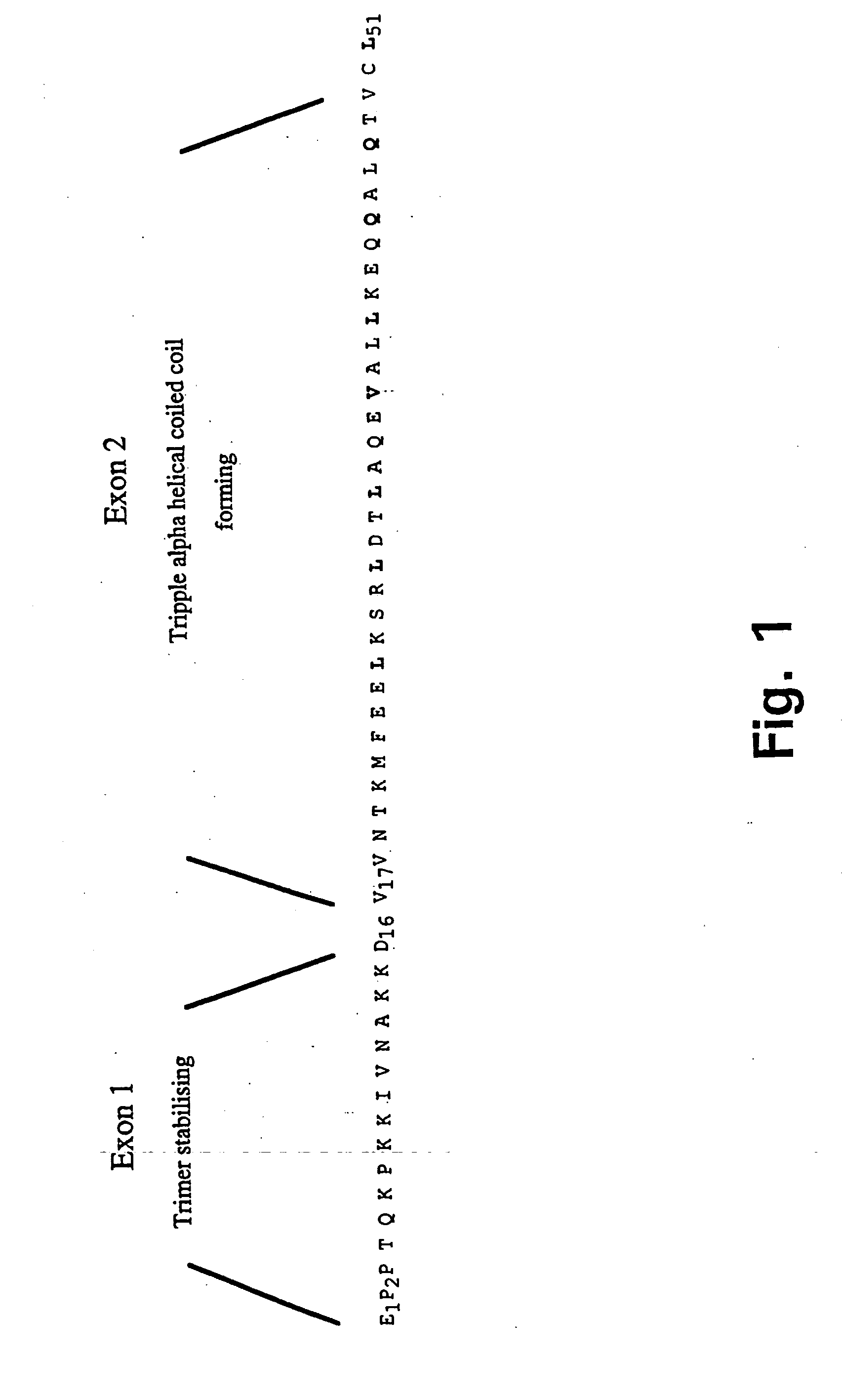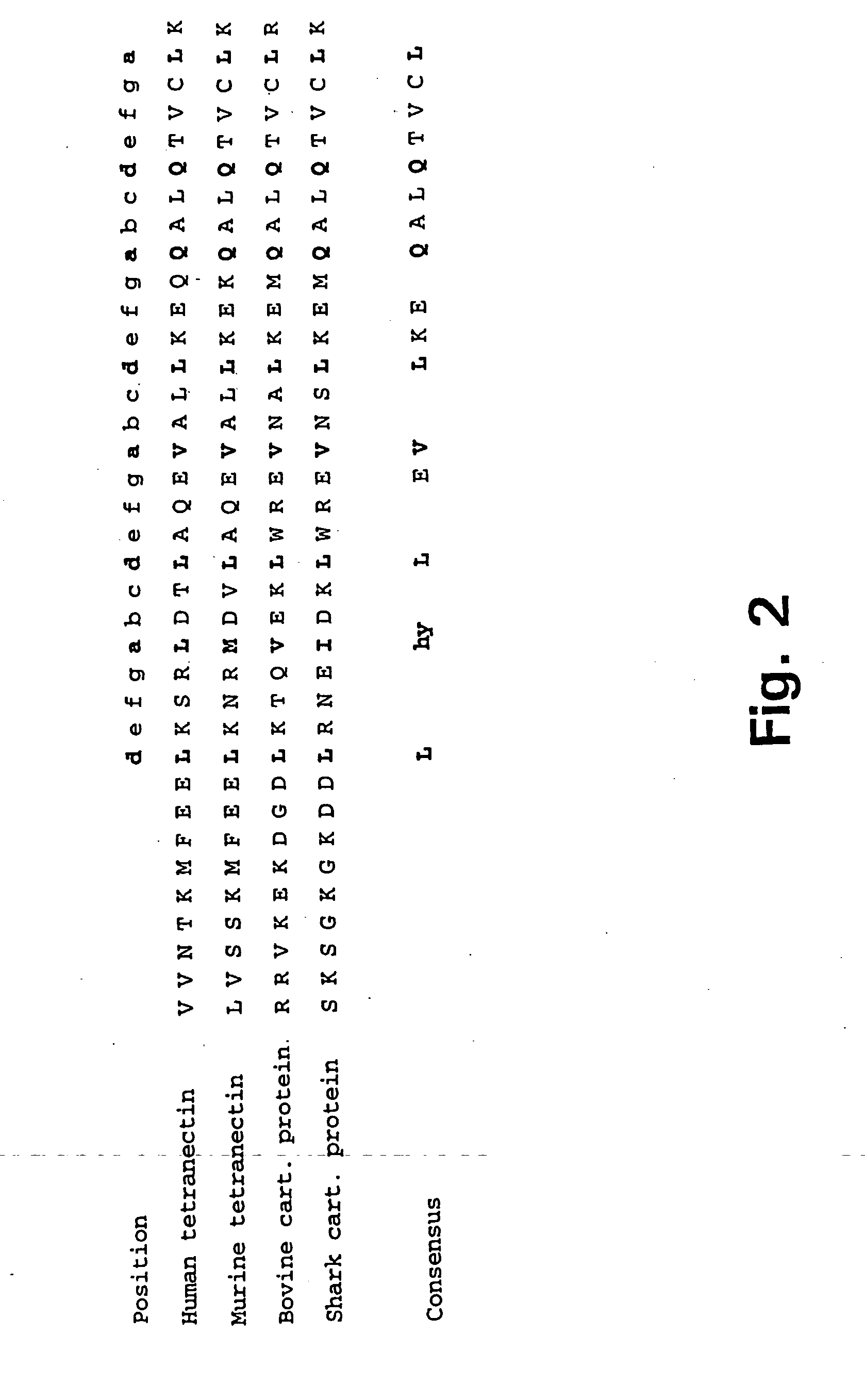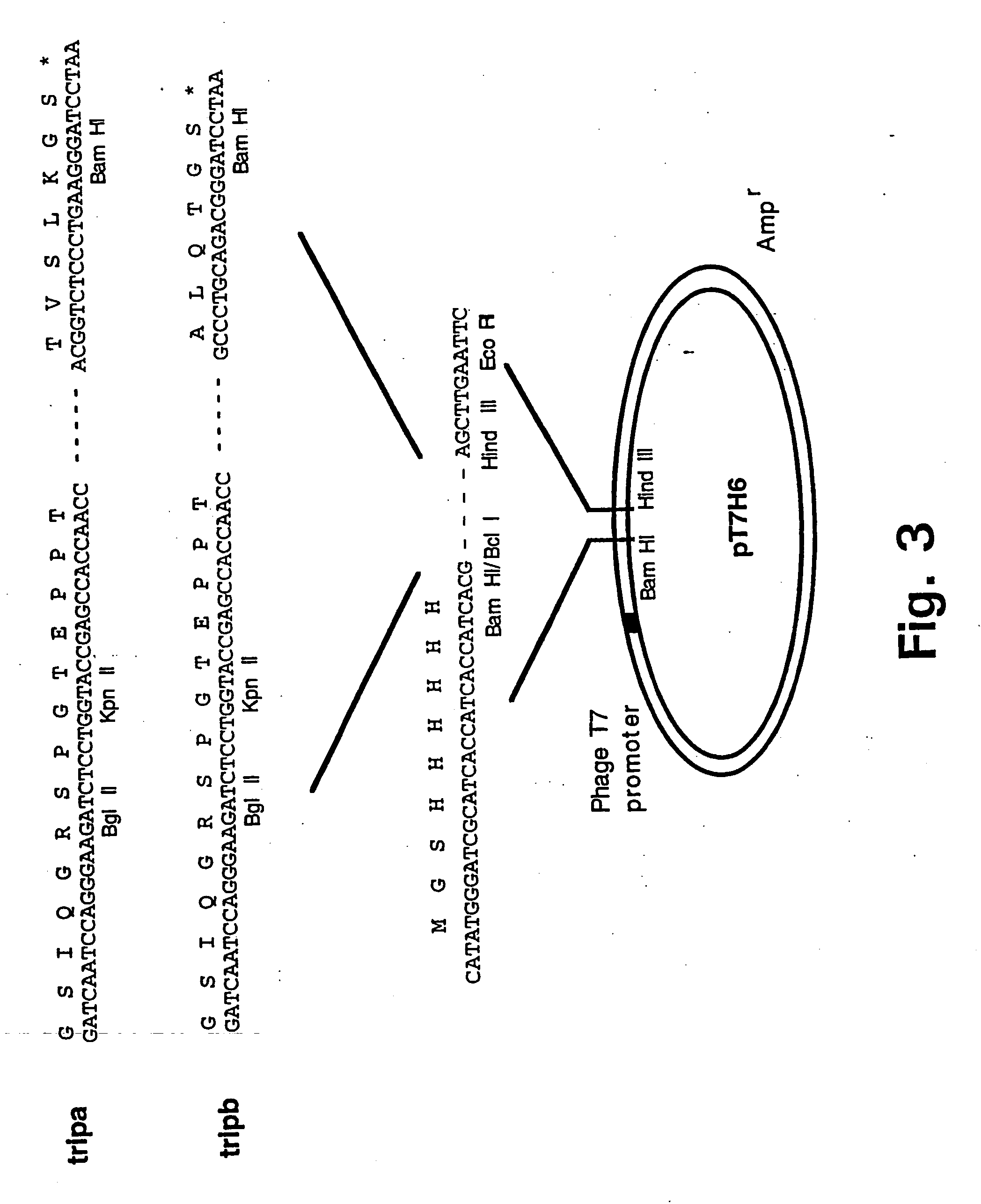Trimerising module
a technology of modules and modules, applied in the field of modules, can solve the problems of virus incorporation, virus only partially successful in overcoming this problem, and cell is unlikely to result in normal cells
- Summary
- Abstract
- Description
- Claims
- Application Information
AI Technical Summary
Benefits of technology
Problems solved by technology
Method used
Image
Examples
example 1
[0153] Design and construction of the pTH6trip E. coli expression vectors for the production of trimerised chimeric fusion proteins.
[0154] The plasmid clone pT7H6FXTN123 (Example 2) was used as template for amplification in two Polymerase Chain Reactions (PCR) (Saiki et al., 1988) with the primer pairs trip-N (SEQ ID NO: 1) and trip-Ca (SEQ ID NO: 2) and trip-N (SEQ ID NO: 1) and trip-Cb (SEQ ID NO: 3), respectively. The amplified DNA fragments, tripa, comprising nucleotide sequences encoding an IQGR cleavage site for the restriction protease FXa (SEQ ID NO: 4) followed by two sites for the restriction nucleases BglII and KpnI, the nucleotide sequence encoding the tetranectin polypeptide sequence for Glu 1 to Lys 52 (SEQ ID NO: 5) followed by recognition sites for the three restriction endonucleases BamHI, HindIII, and EcoRI, respectively, and tripb, comprising nucleotide sequences encoding an IQGR cleavage site for the restriction protease FXa (SEQ ID NO: 4) followed by two sites ...
example 2
[0155] Tetranectin, localisation of the trimerising structural element and stability of the triple alpha helical coiled coil.
[0156] The cDNA encoding the reading frame corresponding to the mature tetranectin single chain (SEQ ID NO: 7) was cloned by specific amplification in a Polymerase Chain Reaction (PCR) (Saiki et al., 1988) of the nucleotide sequences from amino acid residue Glu1 to Val181 using 1st strand oligo-dT primed cDNA synthesized from total human placental RNA as template. Primers used in the PCR were SEQ ID NO: 8 and SEQ ID NO: 9. RNA extraction and cDNA synthesis were performed using standard procedures. The amplified reading frame encoding the monomer subunit of tetranectin was at the 5′-end, via the PCR-reaction, linked to nucleotide sequences encoding the amino acid sequence SEQ ID NO: 10 which constitute an IEGR cleavage site for the bovine restriction protease FXa (Nagai, and Thøgersen, 1987). A glycine residue was, due to the specific design of the 5′-PCR prim...
example 3
[0173] Design and construction of the recombinant chimeric protein TRIPB-UB—the tetranectin trimerising structural element and ubiquitin.
[0174] A plasmid clone, pLCMHF / UB, generously provided by Dr. O. Wiborg harbouring a human ubiquitin cDNA insert (SEQ ID: 16) was used as template and SEQ ID NO: 17 together with SEQ ID NO: 18 were used for amplification in a Polymerase Chain Reaction (PCR) (Saiki et al., 1988) of the nucleotide sequence encoding amino acid residue Ile1 to Gly76 of human ubiquitin(SEQ ID: 19). The amplified DNA fragment was after digestion with the restriction endonucleases BamHI and HindIII ligated into the BamHI and HindIII sites of pTtripb (Example 1) yielding pTtripb-UB (FIG. 13) using standard procedures.
[0175] To prepare the chimeric fusion protein H6FXtripb-UB (FIG. 14, SEQ ID NO: 31) the plasmid pTtripb-UB was grown in medium scale (4×1 litre; 2×TY medium, 5 mM MgSO4 and 100 μg ampicillin) in E. coli BL21 cells, as described by Studier et al. (1990). Expo...
PUM
| Property | Measurement | Unit |
|---|---|---|
| Temperature | aaaaa | aaaaa |
| Temperature | aaaaa | aaaaa |
| Fraction | aaaaa | aaaaa |
Abstract
Description
Claims
Application Information
 Login to View More
Login to View More - R&D
- Intellectual Property
- Life Sciences
- Materials
- Tech Scout
- Unparalleled Data Quality
- Higher Quality Content
- 60% Fewer Hallucinations
Browse by: Latest US Patents, China's latest patents, Technical Efficacy Thesaurus, Application Domain, Technology Topic, Popular Technical Reports.
© 2025 PatSnap. All rights reserved.Legal|Privacy policy|Modern Slavery Act Transparency Statement|Sitemap|About US| Contact US: help@patsnap.com



